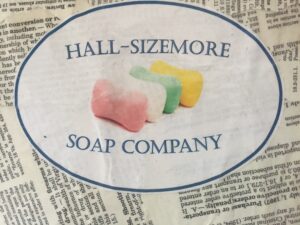
by Dick Hall-Sizemore
A recent podcast produced by VPM, Richmond’s public radio station, is both fascinating and disheartening. Admissible: Shreds of Evidence deals with the early days of the use of DNA as forensic evidence. In particular, it is the story of Mary Jane Burton, a long-time serologist for what is now called the Department of Forensic Science (DFS).
It may come as a shock to some of this blog’s readers, but, in the 1990’s, Virginia was a national leader in the use of DNA for solving crimes. In 1989, the Virginia Supreme Court ruled that DNA could be used as evidence in trials. The 2001 General Assembly enacted legislation to allow offenders to request testing of any biological evidence that had been collected during the investigations of the offenses for which they had been convicted before the techniques for DNA testing had been developed.
Three people submitted requests in 2001 to test any DNA evidence in their cases. The first case taken up by DFS was that of Marvin Anderson, who had been convicted of rape in 1982 and sentenced to 20 years in prison. Although he had been on parole for several years by 2001, he was anxious to clear his name, if possible. In looking through his file, the DFS director discovered the tip of a cotton swab taped to a page of the report. Including the evidence in the file in that manner was against the protocols of the agency. When the DNA of the fluid on the swab was tested, it ruled out Anderson as the perpetrator. The other two offenders who had requested testing of evidence in their files were similarly exonerated.
In response to these findings, then-Gov. Mark Warner ordered testing of a random sample of archived files containing biological evidence related to sex offenses. Out of 31 cases tested, three additional persons were exonerated. Warner then took the extraordinary step of ordering DNA testing of biological evidence in the remaining archived case files for all felony crimes against persons. Over the course of several years, DFS reviewed over half a million files and identified over a thousand cases that met the criteria for testing. In the end, this post-conviction DNA testing project resulted in the exoneration of 13 individuals.
At the center of this activity was Mary Jane Burton, who had worked as a serologist at DFS from 1973 to her retirement in 1988. She died in 1999, about 13 years before that little portion of a cotton swab that she saved ended up proving that a man had been wrongfully convicted.
The media labeled her a hero. She was said to have been some kind of visionary to have kept those shreds of evidence in the belief that the science would advance and that evidence may be useful in clearing some people.
As reporter Tessa Kramer was doing research on the subject of DNA and exonerations, she became interested in finding out more about Mary Jane Burton. At first, almost everyone she spoke to had nothing but good things to say. Occasionally, however, there were hints of something less flattering. As she dug deeper, Kramer uncovered a shocking and, to the Commonwealth, an embarrassing story.
Her key source was a woman who had gone to work at DFS with Burton as her supervisor. The young woman quickly became disillusioned. Burton was sloppy in her procedures and often took shortcuts. One frequent shortcut was skipping testing a sample to rule out a non-human source. Instead of being an objective analyst of evidence, she would go out of her way to assist the police and prosecutors in firming up their case against a primary suspect.
It was in this latter role that she committed her biggest offenses—she falsified reports. One revelation of the podcast (at least to this listener) is that blood stain analysis and comparison are not straightforward yes/no processes. There are numerous facets of fluid samples to be compared. Burton’s colleague observed her once changing the results of a report that had been conducted the day before.
After observing this behavior again, she decided to document it. Therefore, she and other workers would make copies of all the original case reports after they had been filed and then copies of the reports altered by Burton. The changes made by Burton were not dramatic, but just enough to make a difference. The implication is that, after she had learned police were highly interested in one suspect who had been excluded by the initial test, she would make enough of a change in the report that the test would be shown to be inconclusive, thereby keeping that suspect’s name on the table.
To make this story even worse, the young analyst alerted all the upper management to her findings and concerns about Burton’s unorthodox methods. There were numerous meetings at which the whistle blower was urged to be a “team player.” She was transferred to another division within DFS, and eventually fired.
And, as for those shreds of evidence Burton kept, it turns out that she was not a visionary. It was well known among other members of the agency, as well as prosecutors and the defense bar, that she liked to use those shreds in her testimony at trials, sort of a “show and tell,” to impress juries.
Burton’s short cuts and violations of other protocols and best practices were well known throughout the agency and, for some reason, tolerated by management. Peter Marone, the lab’s long-time technical director, who became director in 2008, admitted that DFS had to wait until Burton retired before it could apply for national certification for the lab. It would never have won certification while she was there.
The maddening and tragic aspect of this story is that there were likely numerous defendants who were wrongfully convicted due to Burton’s manipulation of the reports, along with her other dubious practices. One speculation raised in the podcast is that DFS management resisted the accusations against Burton because they knew that, if they came to light, there would be a flood of litigation.
As a result of the podcast, the current DFS is beginning to deal with the potential mess that Mary Jane Burton left behind. Recently, a subcommittee of the Scientific Advisory Committee, which advises the Forensics Science Board, discussed what actions should be taken following its review of the allegations in the podcast and the documentation turned over by VPM, Kramer, and Gina Demas, the whistleblower. It estimates that Burton analyzed biological evidence in 10,000 cases, although it is not known how many of them resulted in convictions. Because DFS has a small staff of serologists, it would not be feasible to go through all those cases.
The chair of the full committee recommended that “anyone impacted by Burton’s past lab work be notified about potential forensic testing errors.” Anyone notified would have the right to have his case reviewed and evidence, if it still exists, retested. Those recommendations will be taken up by the full Advisory Committee and by the Forensic Science Board at meetings later this year.
Identifying and notifying those affected will be major tasks. For a detailed description of the problems faced in notifying those potentially involved in the prior project ordered by Gov. Warner, see here.
My Soapbox
It is highly likely Mary Jane Burton’s work, shoddy and falsified that it was, probably was a chief factor in the wrongful conviction of many people. In fact, she actually testified for the prosecution in the trials of several of the 13 who were later exonerated based on the biological evidence she had kept in her files. These recent revelations will be of little use to those others who were convicted 40-50 years ago. Many will have died. Others will be old, their lives largely ruined.
This podcast is another example of the public necessity for investigative journalism, a rare commodity these days. Perhaps it is also an indication of the new directions and formats for journalism. VPM is to be commended for stepping in to help fill the void in local news reporting.
The podcast is engaging. Kramer structures it somewhat in the form of a mystery story, leaving the listener hanging with a teaser at the end of each episode. (Of course, I have served the role of spoiler!) It consists of 12 half-hour episodes. It is available “wherever you get your podcasts” and is free. You just have to listen to the same commercial over and over and over.

Leave a Reply
You must be logged in to post a comment.